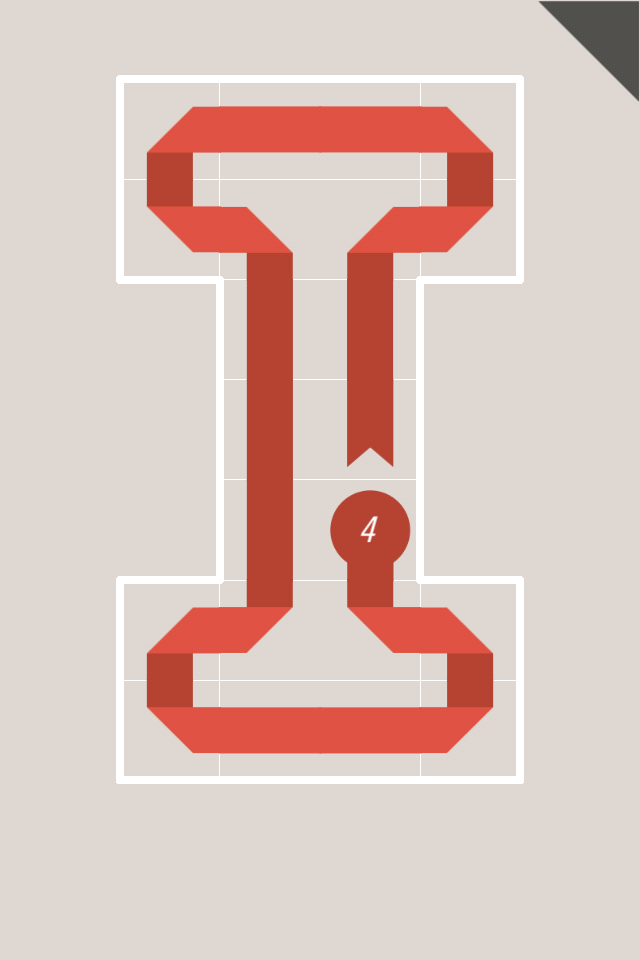People that follow me on Twitter knew it first; now let's talk about this little gem in more detail.
It's no mystery that I like path finding puzzles. BlockPath, for example, made into my list of the 10 best puzzle games of 2013. I have been even developing one of my own in the past months—though that project is currently on hold.
I thought I had seen everything about this concept. I was amazed, then, to be totally surprised by the rules of TAPES.
The game begins in the easiest way. Start from the dot and fill the grid. Piece of cake.
But soon, something different happens: unlike most other similar puzzles, the paths can instersect. So from here...
... you need to do this.
There is a subtlety in the rules: two paths can go over the same cell only if they pass straight through it, crossing each other. When a path makes a turn on a cell, no other pass can use that cell. So in the above case, it wouldn't be possible to go down with the green path and right with the blue one.
The other surprise is that a path can intersect itself, and this is often required to solve the puzzles. Look at this one for example:
there's no way you would be able to fill the grid without going through the same cell twice. Allowing that, the solution is still unique.
Did you notice that there is a number inside the dots? That's the final brilliant rule. The number indicates over how many more cells the path must pass before filling the board; not one more and not one less. Look at this for example:
It would be trivial to fill the grid doing an obvious path, but you'd end in this position:
That's not a solution because you still have 4 more cells to go over. To use those extra cells, you need to make the path intersect itself.
These rules work perfectly to produce delightfully enjoyable puzzles; 108 of them, in the current version. Most of them are not too hard, but they are very fun, and I think that a major reason for that is because the solutions are simply beautiful to look at; I've talked about "paths" so far, but as you have seen, the game represents them as ribbons, which is a perfect metaphor for the rules.
When you solve a puzzle it scrolls away automatically, but you can pull down the screen to look again at the pattern you just created; something that I've done more than once. I think it would have been more rewarding to give full relevance to the solutions and let the player move on when they want.
The puzzles can be surprisingly challenging to solve. The rules controlling the intersections require a different approach from many similar concepts. You can also use a good amount of logic: for example the cells where a path must end are often obvious, and you can use reasonings about parity to rule out certain combinations.
My main regret with this game is that the user interface is not as good as it could be. Drawing the paths is not very smooth, because if you don't move your finger very precisely it's easy to leave the dots behind. Additionally, I would have liked to simply tap a cell in the middle of a path to erase the rest of it and start drawing a new one. Instead, the only way to erase a path is by drawing it backwards, which can get tedious when the path is long.
But those are minor inconveniences when compared to the fun I had. Highly recommended.
Summary
| Nontrivialness | ★★★★☆ |
| Logical Reasoning | ★★★★☆ |
| User Interface | ★★★☆☆ |
| Presentation | ★★★★☆ |
| Loading Time | ★★★★★ |
| Saves Partial Progress | ✘ |
| Status Bar | ✘ |
©2014 Nicola Salmoria. Unauthorized use and/or duplication without express and written permission is strictly prohibited. Excerpts and links may be used, provided that full and clear credit is given to Nicola Salmoria and nontrivialgames.blogspot.com with appropriate and specific direction to the original content.








